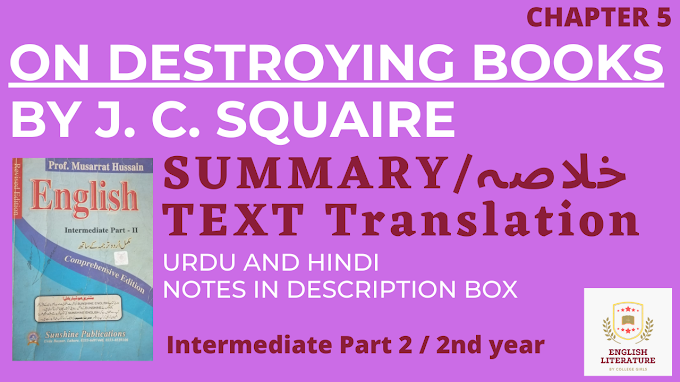Modernism is a cultural, artistic, and intellectual movement that emerged in the period of started around the early 1900s and continued until the early 1940s.It is characterized by a self-conscious break with traditional ways of writing, in both poetry and prose fiction, as well as in the visual arts, music, and architecture. Modernist literature often reflects the fragmented, nonlinear, and subjective nature of human experience.
Origin of Modernism:
Modernism emerged as a response to the societal changes brought about by industrialization, urbanization, and the aftermath of World War I. It sought to capture the complexities and uncertainties of the modern world.
Father of Modernism in Literature:
While it's challenging to pinpoint a single "father" of modernism, T.S. Eliot and James Joyce are often considered key figures in the modernist literary movement.
Examples of Modernism:
- "The Waste Land" by T.S. Eliot
- "Ulysses" by James Joyce
- "To the Lighthouse" by Virginia Woolf
- "The Great Gatsby" by F. Scott Fitzgerald
Characteristics of Modernism in Literature:
Fragmentation and Nonlinear Narrative: Modernist works often feature fragmented structures and nonlinear narratives. This reflects the fractured nature of contemporary experience and the influence of psychological theories like Freudianism. out of chronological order or in other ways where the narrative does not follow the direct causality pattern of the events featured, such as parallel distinctive plot lines, dream
Stream of Consciousness: Modernist writers frequently employed the stream-of-consciousness technique, presenting a character's thoughts and feelings in a continuous flow. This literary device aims to capture the inner workings of the mind.
Symbolism and Allegory: Symbolism is a hallmark of modernist literature, with writers using symbols and allegorical elements to convey complex meanings. These symbols often resist straightforward interpretation.
Allusion and Intertextuality: Modernist works frequently incorporate references to other literary works, historical events, or cultural phenomena. This intertextuality enriches the text and engages readers with broader cultural contexts.
Rejection of Realism: Modernist literature often rejects the conventions of 19th-century realism, opting for innovative and experimental approaches to representation. This rejection may manifest in distorted perceptions of reality or a focus on the subjective experience.
Subjectivity and Individualism: Modernist writers emphasize individual perspectives and subjective experiences. The focus shifts from objective depictions of reality to the unique perceptions and consciousness of each character.
Urban Themes and Alienation: The modernist era coincided with rapid urbanization and industrialization. Many modernist works explore themes of alienation, isolation, and the impact of urban life on individuals.
Technological Influence: The technological advancements of the early 20th century had a profound impact on modernist literature. Writers often engaged with the effects of technology on society, identity, and communication.
Experimentation with Language: Modernist writers experimented with language, form, and style. They sought new ways of expressing ideas and emotions, sometimes breaking traditional grammatical rules or employing unconventional syntax.
Cultural and Social Critique: Modernist literature often engages in a critique of contemporary culture and society. Writers questioned established norms, values, and institutions, reflecting the disillusionment and upheaval of the time.
Multiplicity of Perspectives: Modernist works frequently present multiple perspectives or points of view, challenging the idea of a single, authoritative narrative. This technique encourages readers to actively participate in constructing meaning.
Existential Themes: Many modernist works explore existential themes, such as the search for meaning, the nature of existence, and the individual's relationship to society and the universe.
Modernism and Postmodernism:
While modernism sought to break with tradition, postmodernism, which emerged later, further questioned the stability of meaning, the idea of a single "truth," and the authority of institutions. Postmodernism often incorporates irony, self-awareness, and intertextuality.
Modernism in English Literature:
English literature in the early to mid-20th century saw a significant shift towards modernist principles, with writers like Virginia Woolf, D.H. Lawrence, and Ezra Pound contributing to the movement.
Modernism vs. Postmodernism:
Modernism is characterized by a belief in objective truth and a sense of order, while postmodernism questions these notions, embracing relativity and skepticism toward grand narratives.
Modernism in American Literature:
American literature during the early 20th century, particularly after World War I, saw a strong influence of modernist ideas. Writers like Ernest Hemingway and F. Scott Fitzgerald were part of this movement.
Modernism in Literary Theory:
Modernist literary theory involves the examination of how literature and language can represent the complexities of human experience and consciousness.
Modernism Movement in English Literature:
The modernist movement in English literature is marked by a departure from traditional forms and styles, experimenting with new narrative techniques and themes.
Modernism and Postmodernism in Literary Theory:
Literary theory in the modernist era focused on understanding the relationship between language and reality, while postmodernist theory challenged the stability of meaning and the authority of language.
What is modernism
Origin of Modernism
Father of Modernism In literature
Examples of modernism
Modernism in literature
Characteristics of Modernism in Literature
Modernism VS postmodernism
Modernism in English literature
Modernism and postmodernism in literature
Modernism vs postmodernism
Modernism literary theory
Modernism theory
Modernism movement in English literature
Modernism literary movement
Modernism and postmodernism in literary theory
Modernism vs postmodernism in literature
Modernism in American literature
Modernism theory in literature








0 Comments
If You Have Any Doubts Let Me Know, Please Let Me Know.